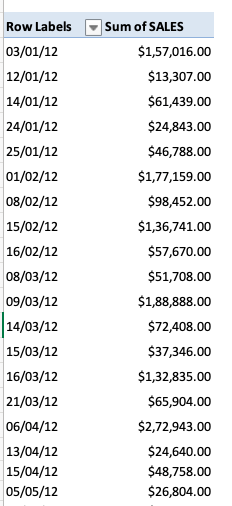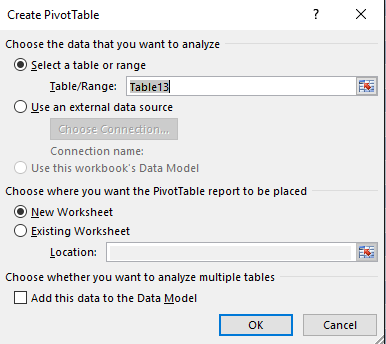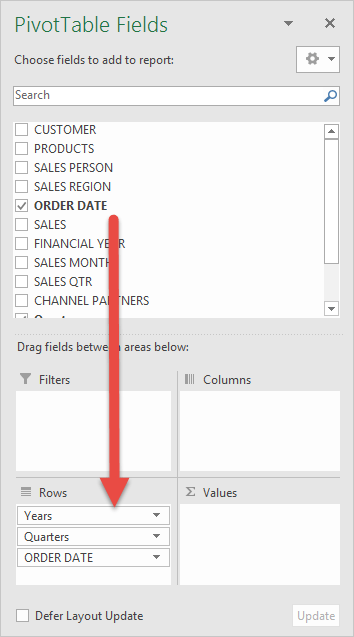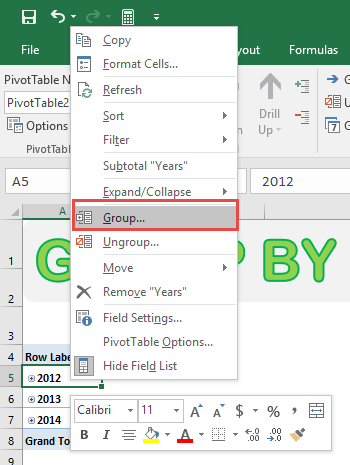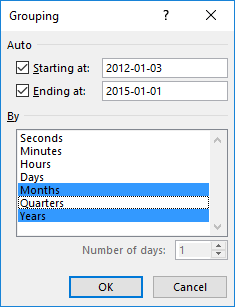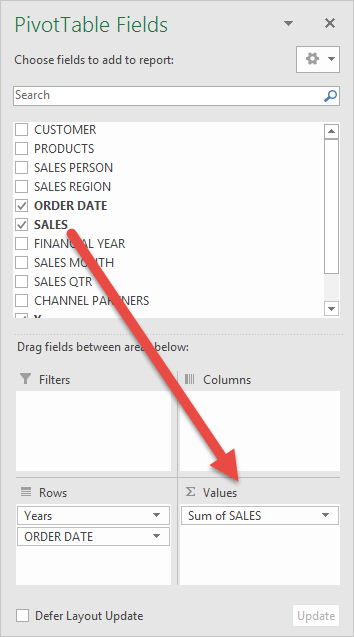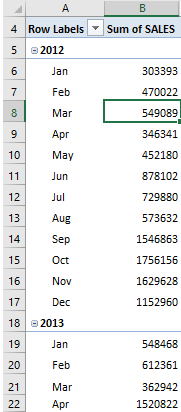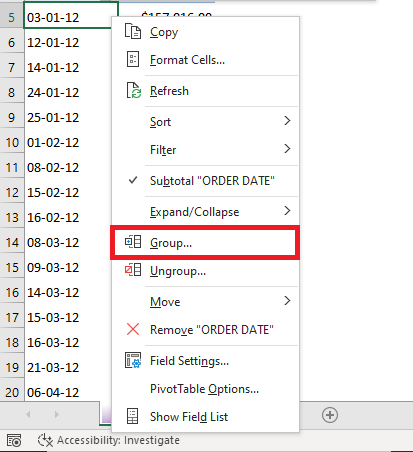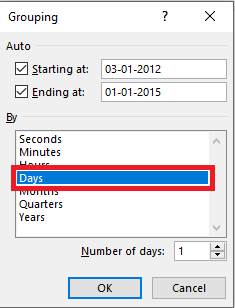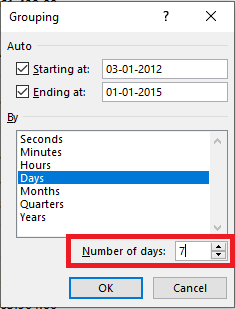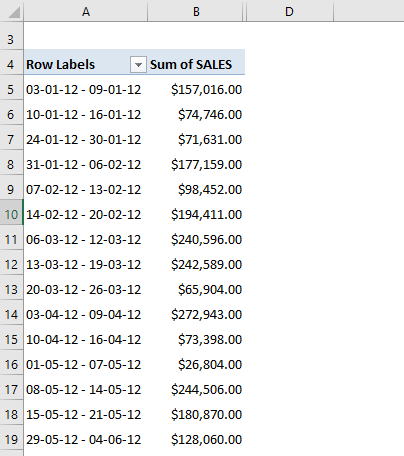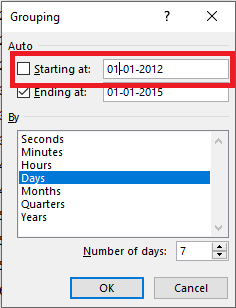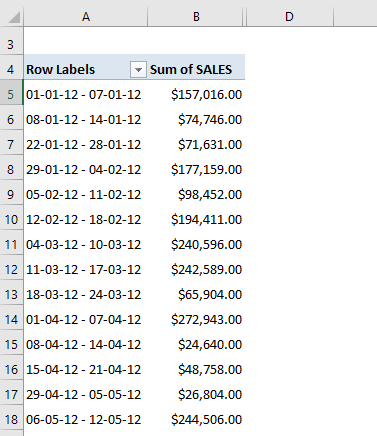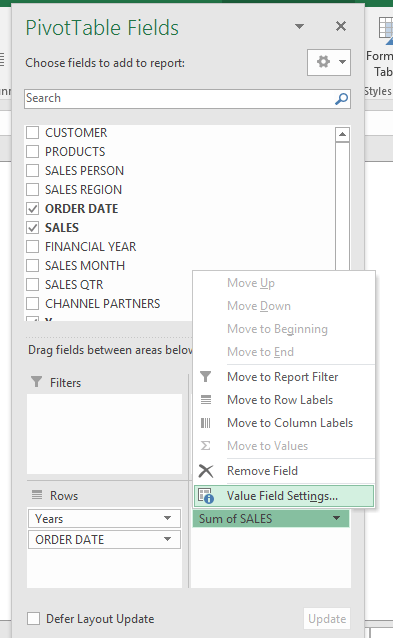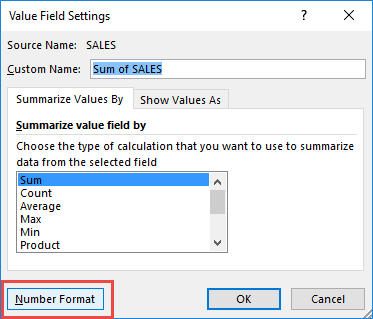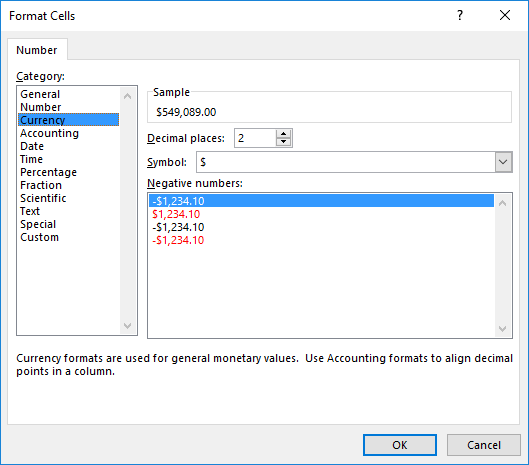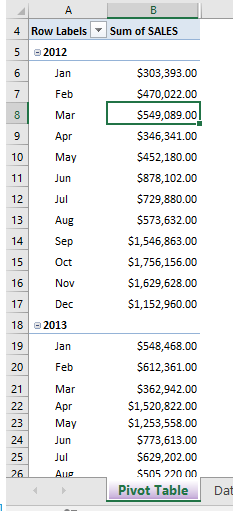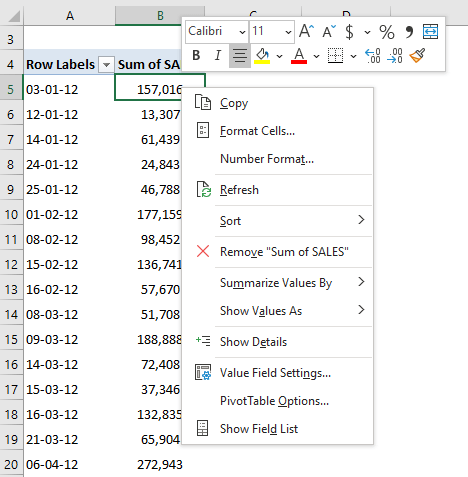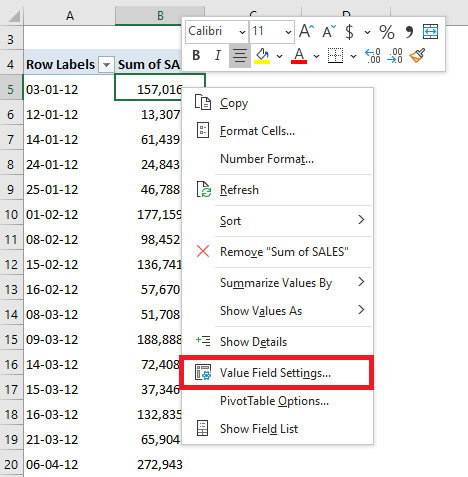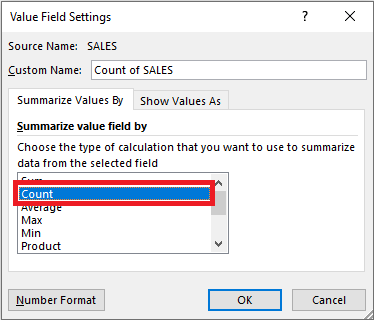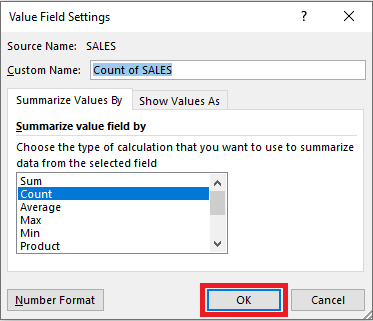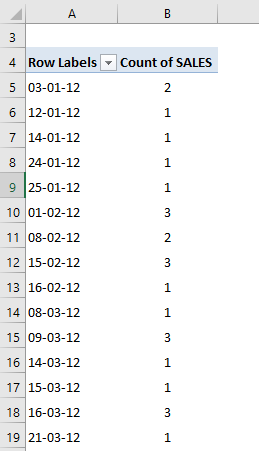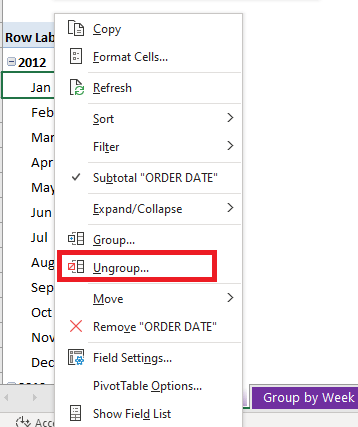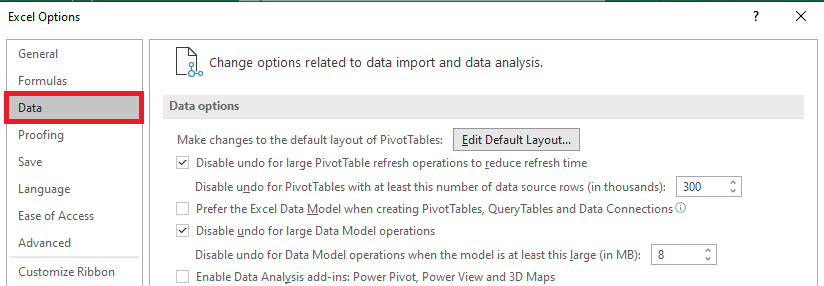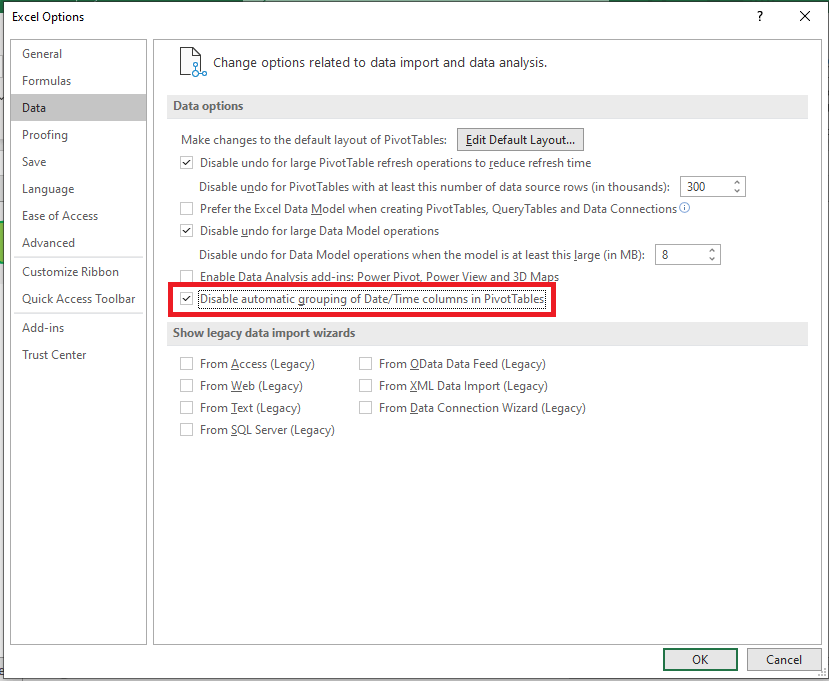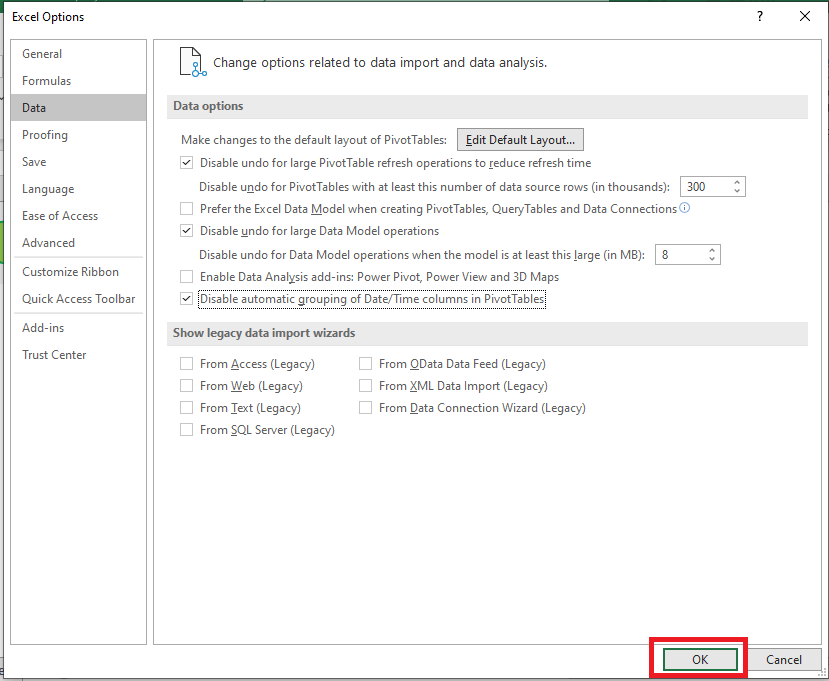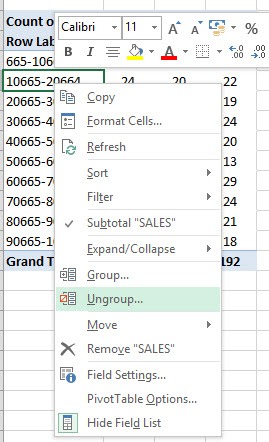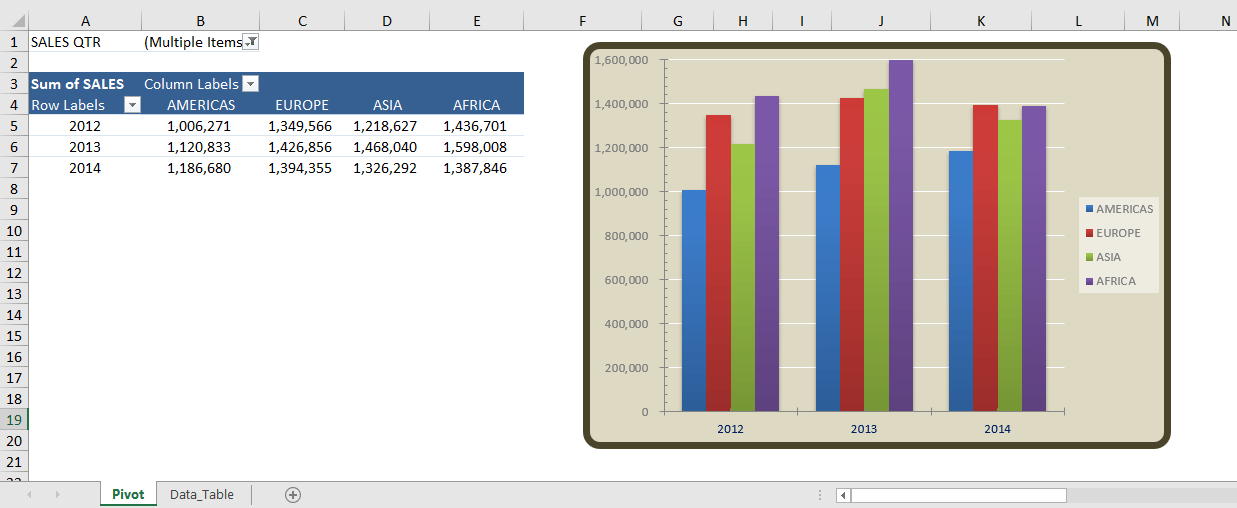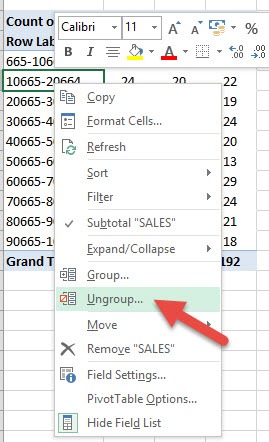Key Takeaways
- Grouping dates by month, year, or week in Excel Pivot Tables allows for efficient analysis of trends and patterns over time, providing a snapshot view that can be essential for time series analysis, project management, or any situation where understanding the timing of events or data points is crucial.
- Utilizing features such as the WEEKNUM formula or the group by week option in Pivot Tables simplifies the process of aggregating data into these time-based categories, delivering a straightforward method for users to dissect large datasets into more manageable and meaningful segments.
- Advanced grouping options in Excel Pivot Tables enable users to go beyond standard time categories, with capabilities to group by fiscal years, quarters, sales ranges, or even text fields, expanding the analytical flexibility and allowing for customized insights tailored to specific business needs or reporting requirements.
Table of Contents
Group Dates in Pivot Table by Month & Year
In the data below, you can see that there are two columns: one that contains the transaction date of the sale, and the second column contains the total sales amount for a particular date.
Want to know How To Group Dates in Pivot Table by Month?
In the example below, I show you how to Pivot Table Group by Month:
STEP 1: Insert a new Pivot table by clicking on your data and going to Insert > Pivot Table > New Worksheet or Existing Worksheet
STEP 2: In the ROWS section put in the Order Date field.
Notice that in Excel 2016 (the version that I am using) it will automatically Group the Order Date into Years & Quarters:
STEP 3: Right-click on any row in your Pivot Table and select Group so we can select our Group order that we want:
STEP 4: We need to deselect Quarters and make sure only Months and Years are selected (which will be highlighted in blue).
This will group our dates by the Months and Years. Click OK.
STEP 5: In the VALUES area put in the Sales field. This will get the total of the Sales for each Month & Year:
This is how you can easily create Pivot Table Group Dates by Month!
Group Dates in Pivot Table by Week
To group the dates by week, follow the steps below:
STEP 1: Right-click on one of the dates and select Group.
STEP 2: Select the day option from the list and deselect other options.
STEP 3: In the Number of days section, type 7.
This is how the group dates in Pivot Table by week will be displayed.
STEP 4: You can even change the starting date to 01-01-2012 in the section below.
Your final grouped data is ready!
Change Formatting
Now we have our sales numbers grouped by Month & Years, notice that we can improve the formatting by following the steps below:
STEP 1:Click the Sum of SALES and select Value Field Settings
STEP 2: Select Number Format
STEP 3: Select Currency. Click OK.
You now have your total sales for each monthly period! Quick & Easy!
Summarize Value by
In the previous examples, you saw how to get total sales by month, year, or week. You can even calculate the total number of sales that occurred in a particular month, year, or week.
Let’s look at an example to know how:
STEP 1: Right-click anywhere on the Pivot Table.
STEP 2: Select Value Field Settings from the list.
STEP 3: In the Value Field Setting dialog box, select Count.
STEP 4: Click OK.
This will summarize the values as a count of sales instead of the sum of sales (like before).
Ungroup Dates
To ungroup dates in a Pivot Table, simply right-click on the dates column and select ungroup.
Or, you can go to the PivotTable Analyze tab and select Ungroup.
Once this is done, the data will be ungrouped again.
Control Automatic Grouping
If you wish to, you can easily turn off this automatic date grouping feature in Excel 2016. To do that, follow the steps below:
STEP 1: Go to File Tab > Options
STEP 2: In the Excel Options dialog box, click Data in the categories on the left.
STEP 3: Check Disable automatic grouping of Date/Time columns in PivotTables checkbox.
STEP 4: Click OK.
This will easily turn off the automatic grouping feature in the Pivot Table! So, the date will be not be grouped automatically now when you drag the date field to an area in the pivot table.
Troubleshooting Common Issues
Ungrouping Dates When Necessary
Have you ever found yourself staring at an Excel pivot table only to realize that the dates have banded together like a mini army, and you’re not sure why or how to disband them? Well, you’re not alone. Automatic grouping can be helpful, but you may need to ungroup dates for detailed analysis. Simply right-click on the dates in the pivot table and choose ‘Ungroup’ from the contextual menu. Alternatively, you could make use of the handy PivotTable Analyze tab and hit ‘Ungroup’. By doing this, you’ll revert to the ungroomed wilderness of individual dates, free to analyze as you please.
Solving Pivot Table Limitations with Grouping
Grouping in pivot tables can be a game-changer, especially when dealing with limitations around data analysis. If you’ve been thwarted by an unwieldy set of data points that hinder readability, or if you’re struggling to discern patterns, grouping is your trusty sidekick. It neatly summarizes data ranges, such as lumping sales figures into quarters or clustering ages into generational bands. When dates act up, refusing to group due to blank cells or field mismatch, a quick inspection and cleanup can save the day. Consider double-checking your source data for consistency, and ensure no stray text is masquerading as a date. With these moves, you’ll master your pivot table landscape and turn limitations into triumphs.
Maximizing Efficiency with Pivot Tables
Tips to Enhance Pivot Table Productivity
Dive into pivot table productivity with tips designed to make you an Excel aficionado. Start by harnessing the power of keyboard shortcuts – they’re like secret spells that speed up your workflow. Think ‘Alt, N, V’ to conjure a PivotTable without a mouse click in sight. Embrace the design options that pivot tables offer; a well-formatted report is not just eye candy but also makes data comprehension a breeze. Don’t shy away from calculated fields and items to perform additional analysis without altering your raw data. Lastly, familiarize yourself with pivot charting – a dynamic duo with pivot tables – for visual representations that amplify your data story.
Utilizing Pivot Tables Throughout the Year
Harnessing pivot tables throughout the year can transform the way you manage data across seasons. Begin by outlining key dates and events for your business or project and use the power of pivot tables to track progress, spotlight seasonal trends or anticipate peaks and troughs in activity. Monthly reviews with pivot tables can shed light on performance metrics, helping you adjust strategies in a timely fashion. Quarterly reporting becomes less of a chore and more of an insightful exercise into operational efficiency. As the year unfolds, pivot table data can guide budgeting decisions for the following year, making it an indispensable tool for year-round data management.
FAQ: Master Your Excel Pivot Tables
How do I group dates in a pivot table by month and year quickly?
To group dates by month and year in a pivot table swiftly, perform the following steps. First, select any cell containing a date in your pivot table. Next, access Pivot Table Tools, choose ‘Analyze’, followed by ‘Group Field’, and then select ‘Group Selection’. In the dialog box that appears, tick both ‘Months’ and ‘Years’. Once you hit ‘OK’, your dates will be bundled neatly by month and year, revealing an organized overview of your time-based data.
Can you ungroup dates once they have been grouped in a pivot table?
Absolutely! Ungrouping dates in a pivot table is just a few clicks away. Right-click on any date within your grouped data and select ‘Ungroup’. This will restore the dates to their original, ungrouped state, giving you the individual date details you started with. It’s a straightforward process that can be reversed at any time, offering flexibility in your data analysis approach.
How can I practice and become proficient in using pivot tables in excel?
To become proficient in using pivot tables in Excel, practice is key. Start by experimenting with simple datasets, creating pivot tables, and playing with different types of groupings and calculations. Then, watch tutorials, enroll in online courses, or read blogs to learn new tricks and techniques. Gradually move on to more complex datasets. Regularly challenge yourself with new data analysis tasks, and soon, you’ll be navigating pivot tables with ease and confidence.

Bryan
Bryan Hong is an IT Software Developer for more than 10 years and has the following certifications: Microsoft Certified Professional Developer (MCPD): Web Developer, Microsoft Certified Technology Specialist (MCTS): Windows Applications, Microsoft Certified Systems Engineer (MCSE) and Microsoft Certified Systems Administrator (MCSA).
He is also an Amazon #1 bestselling author of 4 Microsoft Excel books and a teacher of Microsoft Excel & Office at the MyExecelOnline Academy Online Course.
